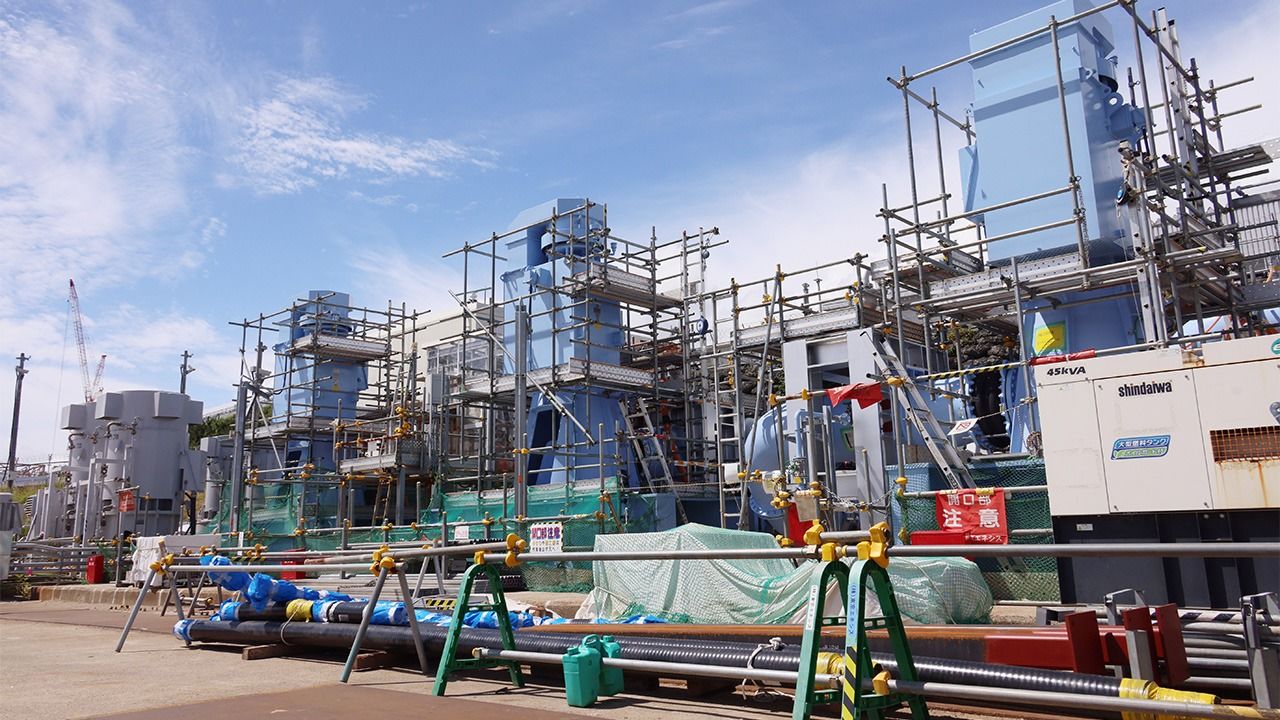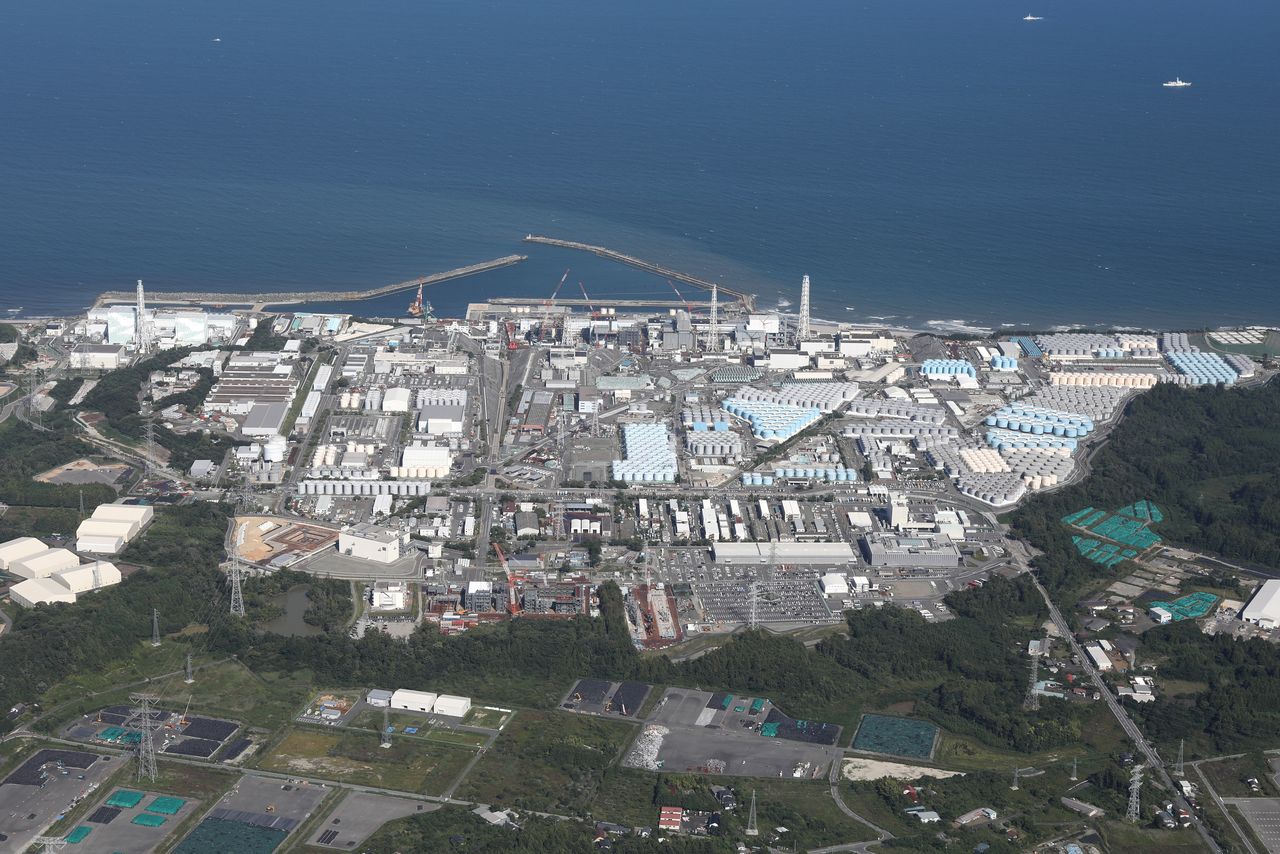
Toward Better Understanding of ALPS-Treated Water from Fukushima Daiichi
Politics Economy Society- English
- 日本語
- 简体字
- 繁體字
- Français
- Español
- العربية
- Русский
What Is the ALPS Discharge Problem?
From August 24, 2023, the Tokyo Electric Power Co. (TEPCO) released the first batch of Advanced Liquid Processing System (ALPS) treated water into the sea for 18 days. After that, there was another release starting October 5, and then again on November 2.
The Fukushima Daiichi Nuclear Power Station’s units were damaged by the March 11, 2011, Great East Japan Earthquake, the tsunami that followed, and the ensuing hydrogen explosions after power was lost at the site. After the accident, the contaminated water consisting of precipitation and groundwater around the damaged unites has been collected and stored in tanks on the power plant grounds as part of the decommissioning work. As the contaminated water is still being generated and there are limits to tank storage, on April 13, 2021, the Japanese government established a plan to decontaminate and discharge ALPS-treated water into the sea.

TEPCO’s Fukushima Daiichi Nuclear Power Station. Treated water storage tanks cover the facility grounds at the right of the photo. Taken in August 2023. (© Jiji)
The ALPS-treated water is run through cesium adsorption and ALPS equipment to remove 62 different nuclides, excluding tritium, to purify it to meet legal standards. To ensure the absolute minimum of reputational damage on discharge into the sea, TEPCO not only adheres to strict regulatory standards, but also implements secondary treatment to bring the declared total concentration levels of nuclides (excluding tritium) to less than 1% of the regulatory safety standards. The ALPS-treated water is then diluted over 100 times with massive amounts of seawater to reduce the tritium levels as much as possible before discharge.
The amount of tritium in the finally released water is one fortieth those of the amount allowed by the Japanese regulatory standards, and one seventh the World Health Organization’s allowed level in its drinking water standards. Tritium is widespread in the natural world and is introduced into the human body through drinking water and other means. It is usually excreted and does not concentrate in living creatures or organs.
Before discharge began, the International Atomic Energy Agency performed a safety and regulatory review with regard to the ALPS-treated water. On the basis of on-site surveys, sampling analysis of the water and other steps, the IAEA issued a report concluding that the equipment and operations related to the discharge are consisted with relevant international safety standards, and that in regard to analysis, TEPCO demonstrated a highly level of analytic technological capabilities.
Furthermore, IAEA Director General Rafael Grossi stated that the discharges were consistent with international standards and will have a negligible impact on the environment.

On July 4, 2023, IAEA Director General Grossi presented his report to Prime Minister Kishida Fumio stating that the planned discharge of tritium-bearing treated water from Fukushima Daiichi is “consistent with relevant international safety standards.” (© Reuters)
Regular monitoring of seawater in the area is done both during and after discharge. It has been shown that currently, tritium concentrations are below detectable levels (less than 7–8 becquerels per liter), confirming no impact on people or the environment.

An IAEA Task Force at the fishing port of Hisanohama in Iwaki, Fukushima Prefecture, on October 19, 2023. (© Reuters)
On January 30, 2024, the IAEA released its report on the safety review after discharge began, stating, “the Task Force did not identify anything that is inconsistent with the requirements in the relevant international safety standards.” The IAEA survey team that visited Japan included members from China and South Korea.
After discharge began, however, China stopped all imports of Japanese seafood. Hong Kong and Macau banned imports of raw seafood from 10 prefectures and municipalities of Japan. The Japanese government presented its official objections to these responses.
Disputes at a Meeting of the London Protocol Group and Signatory Nations
South Korea and Greenpeace International began to raise their concerns about the discharge of the ALPS treated water into the sea in 2019 at the meeting of Compliance Group of the London Protocol—of which I am a committee member—and a meeting of signatory members. It was reported by media that Korean government considered bringing a suit with the International Tribunal for the Law of the Sea in 2019. However, the Korean government has not done so.
The above-mentioned London Protocol, concluded in 1996, is an international agreement to strengthen the Convention on the Prevention of Marine Pollution by Dumping of Wastes and Other Matter 1972 (London Convention), which is one of the international agreements to protect the marine environment from human activities. The London Protocol completely bans the deliberate disposal, dumping, or incineration of waste or other matter from vessels, aircraft, and platforms at sea. At the assembly of the Compliance Group and signatory nations, South Korea, China, and Greenpeace made claims that the discharge of water in Fukushima was against Article 2 of the London Protocol which states: “Contracting parties shall. protect and preserve the marine environment from all sources of pollution.” They also claimed that the tritium contained in the ALPS-treated water was produced by an accident, rather than normal processes of operation, and accordingly the practice of releasing water with tritium in other countries with nuclear plants did not justify the discharge of the treated water in Fukushima.
It should be noted that the London Protocol does not place any restriction on discharge of water from ground-based facilities, including tanks and pipelines on the land, but covers the dumping of water from boats and other marine sources. In this regard, according to the secretariat of the International Maritime Organization, ground-based pipelines are not considered as “artificial marine structures,” and therefore the disposal of waste through such pipelines is outside the scope of regulation under the London Convention and Protocol.
As for the second claim, it should be noticed that the ALPS-treated water meets the standards defined the International Commission on Radiological Protection and, as far as the contents of the liquid are the same, there is no legal basis to distinguish the liquid produced by a nuclear accident from that produced in normal operation of nuclear power plants.
Japan’s International Responsibilities
Of course, there is no dispute that every state has an obligation to protect and preserve the marine environment.
There are international laws regulating the discharge of ALPS-treated water into the sea. The United Nations Convention on the Law of the Sea (UNCLOS) defines a variety of individual responsibilities related to the marine environment in its Article 192, which specifies responsibilities to prevent, reduce, and control marine pollution, as well as obligations to conduct environmental impact assessments. However, according to this article, measures to be taken and standards to be applied for these purposes are left to the discretion of each country.
Such individual countries, however, do not have unlimited discretion. To avoid international legal condemnation, the implementation of their measures should conform to standards set by internationally recognized specialist agencies. In the case of ocean discharge, the relevant measures would have to align with standards set by the IAEA. The discharge of ALPS-treated water in Fukushima complies with the safety standards and guidelines set by the IAEA, which was verified through IAEA investigations.
The Need for Ongoing Diplomacy
At the 2023 meeting of the London Convention signatory parties, South Korea, China, and Greenpeace once again offered objections based on the same grounds.
The secretariat of the London Convention unofficially provided an opportunity for the IAEA to make a report. Almost all government representatives stated their full confidence in Japan’s transparent information sharing and the IAEA inspection reports. In particular, the US government emphasized its own belief that this issue must be considered from scientific viewpoints and based on IAEA survey results, and so found that it is purely natural to trust Japan’s information on every front. Even countries that had once supported the position of South Korea and China changed their views and finally announced their support for the position of Japan.
This discussion will likely recur as long as the discharge continues. However, the diplomatic efforts made by the Japanese government have gained the support of the international community, as I have witnessed.

US Ambassador to Japan Rahm Emanuel (left) visited Sōma, Fukushima Prefecture, during the first discharge session. While there, he tasted local fruit and purchased local seafood at Hama no Eki Matsukawaura on August 31, 2023. (© Reuters)
(Originally published in Japanese. Banner photo: A pump drawing seawater to dilute treated water from TEPCO’s Fukushima Daiichi Nuclear Power Station. Taken on August 27, 2023. © Jiji.)
Fukushima TEPCO Great East Japan Earthquake nuclear power Fukushima Daiichi 3/11 tritium